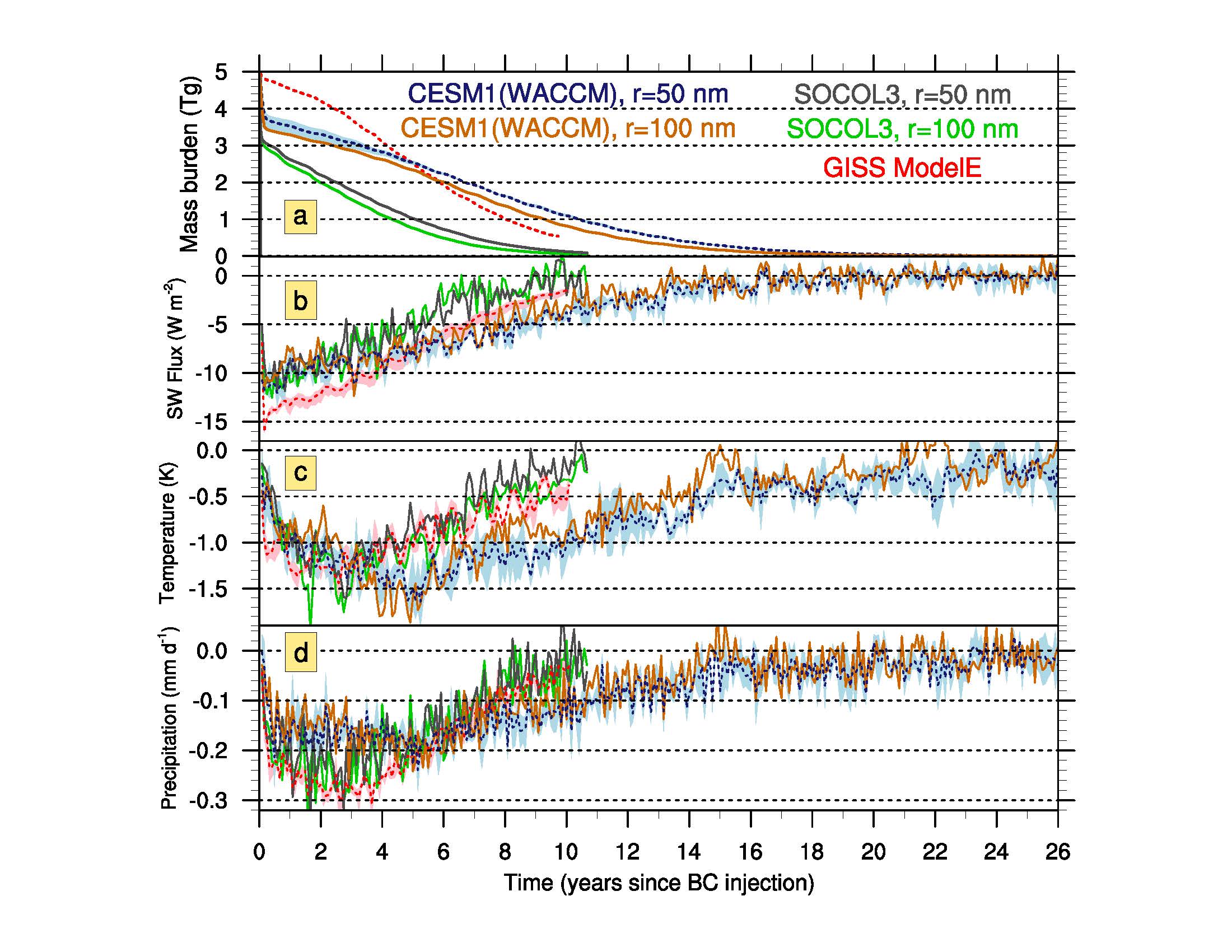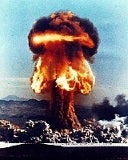WACCM Model Simulates Global Environmental Effects of a Regional Nuclear War
A regional nuclear conflict between India and Pakistan would not only inflict immediate damage in the subcontinent, including massive loss of life and destruction of built infrastructure; severe long-term environmental damage would also spread globally, lasting decades, researchers have found. In a paper published in the AGU journal Earth’s Future, NCAR Atmospheric Chemistry Division project scientists Michael Mills and Julia Lee-Taylor and their colleagues present the first study of such a scenario to use an Earth system model including coupled interactions between atmospheric chemistry and dynamics, ocean dynamics, sea ice and land components. They studied a scenario in which India and Pakistan each detonate 50 small nuclear weapons, about half of their current arsenals, in modern megacities, igniting fires that would build for hours after the explosions. The fires would build into firestorms consuming buildings, vegetation, roads, fuel depots, and other infrastructure, releasing energy many times that of the weapon’s yield, generating 5 Tg of smoke in the form of black carbon (BC).
Calculations using version 1.0 of the Community Earth System Model (CESM1), with the Whole Atmosphere Community Climate Model (WACCM) show that the BC would self-loft to the stratosphere, where it would spread globally, producing the coldest average surface temperatures in the last 1000 years. Killing frosts would reduce growing seasons by 10-40 days per year for 5 years. The figure shows how CESM1(WACCM) calculates that the BC would remain in the stratosphere (panel a) reducing solar fluxes to the surface (panel b) for nearly 2 decades, much longer than previous studies of the same scenario with other models, due to interaction of the radiation, chemistry, and dynamics calculated in the coupled model. Surface temperatures (panel c) and precipitation (panel d) would be reduced for more than 25 years, due to thermal inertia and albedo effects in the ocean and expanded sea ice. Previous studies did not include both full ocean dynamics and atmospheric chemistry, and found that these disruptive effects on surface climate would last about 10 years.
At the same time, intense heating of the stratosphere would cause global ozone losses of 20%-50% over populated areas, levels unprecedented in human history. The authors calculate summer enhancements in damaging ultraviolet radiation of 30%-80% over mid-latitudes, suggesting widespread damage to human health, agriculture, and terrestrial and aquatic ecosystems. The combined cooling and enhanced UV would put significant pressures on global food supplies and could trigger a global nuclear famine. The authors also note that the 100 relatively small nuclear bombs in the study represent just a small fraction of the world’s approximately 17,000 nuclear weapons.

The figure shows how calculations using CESM1 (WACCM) produce much longer-lasting effects on climate than previous studies of the same nuclear war scenario between India and Pakistan, which used models lacking all of the atmospheric chemistry, deep ocean, and land responses included in CESM1 (WACCM). In panel a, we see the globally averaged mass burden of black carbon (BC), which starts at 5 Tg in all models, persisting longer than other models, despite initially high losses due to rainout. Panel b compares the global reduction in shortwave net flux at the surface (W m-2), due to BC absorbing sunlight in the stratosphere. Panel c shows the reduction in global average surface temperatures (K), which lag solar forcing responses in CESM1 (WACCM) due to the thermal inertia of oceans and sea ice. Panel d shows the reduction in global precipitation (mm/day), which responds to both changes in temperature and changes in solar flux at the surface. The dark blue dashed line and light blue shading show the average and range of an ensemble of 3 CESM1 (WACCM) runs assuming the BC has a 50 nm radius. The gold line shows our simulation assuming a 100 nm radius. The red, grey, and green curves show results from two previous studies of the same scenario, which used two independent climate models.
Mills, M. J., O. B. Toon, J. Lee-Taylor, and A. Robock (2014), Multi-decadal global cooling and unprecedented ozone loss following a regional nuclear conflict, Earth's Future, n/a–n/a, doi:10.1002/2013EF000205
